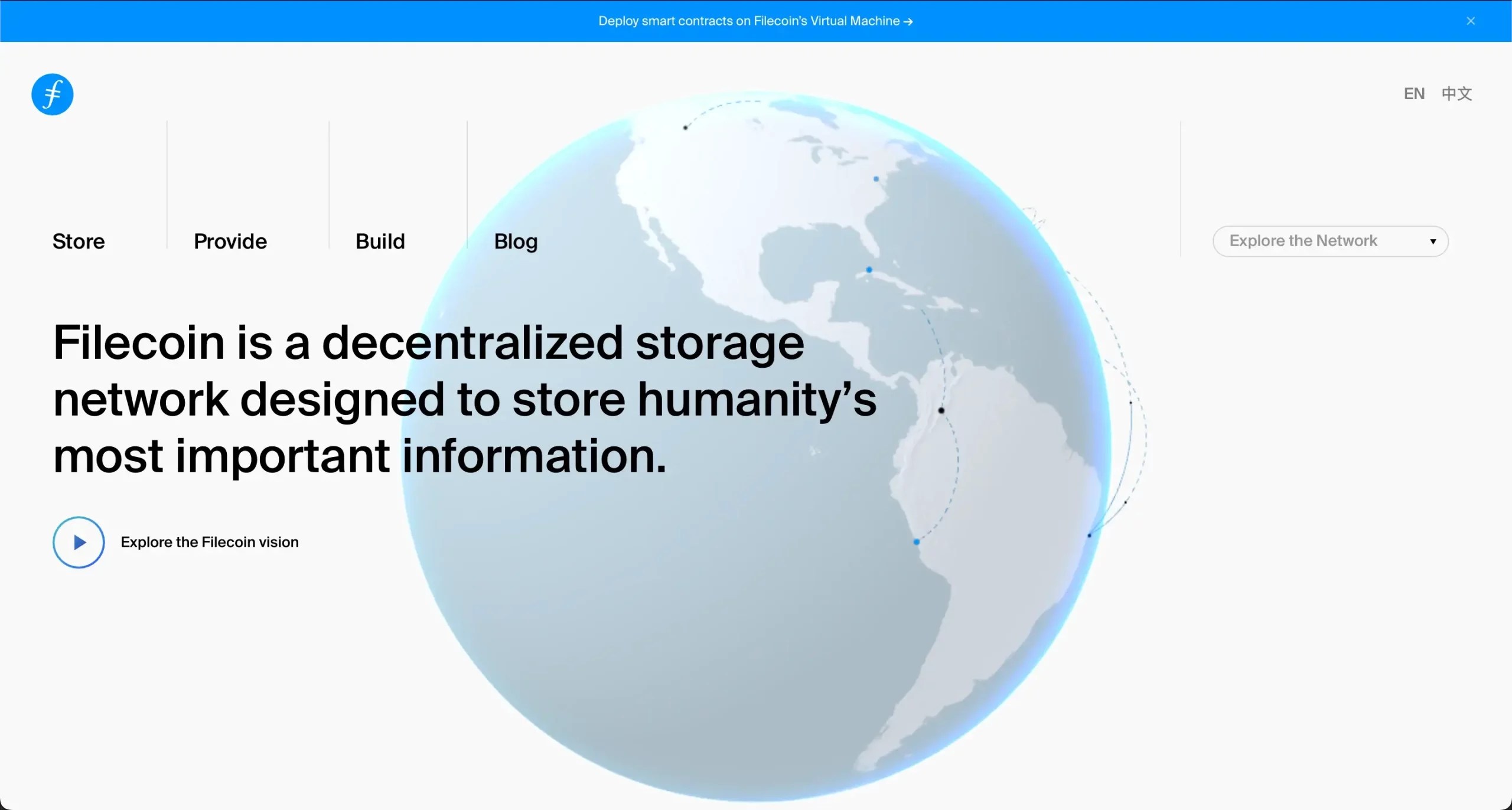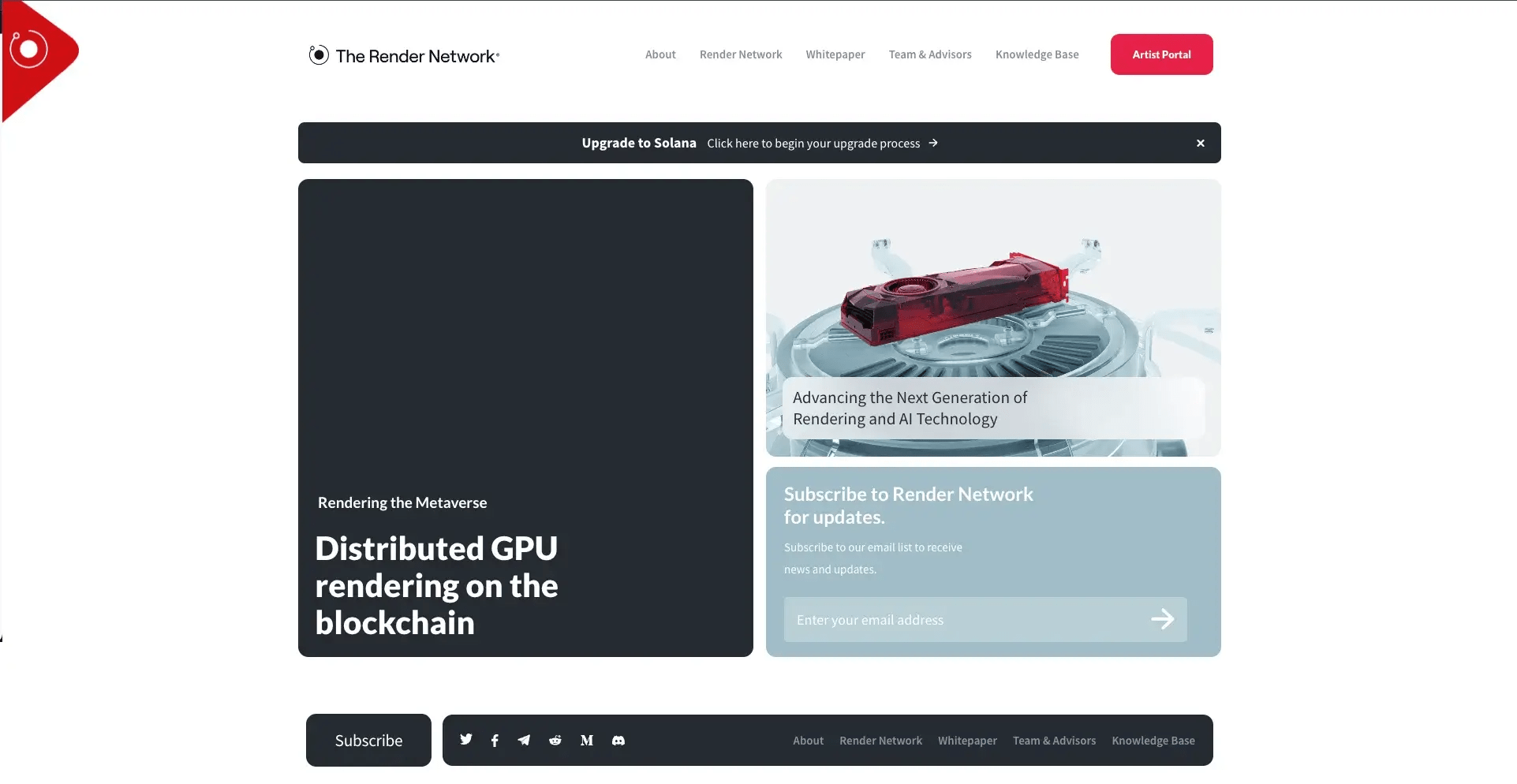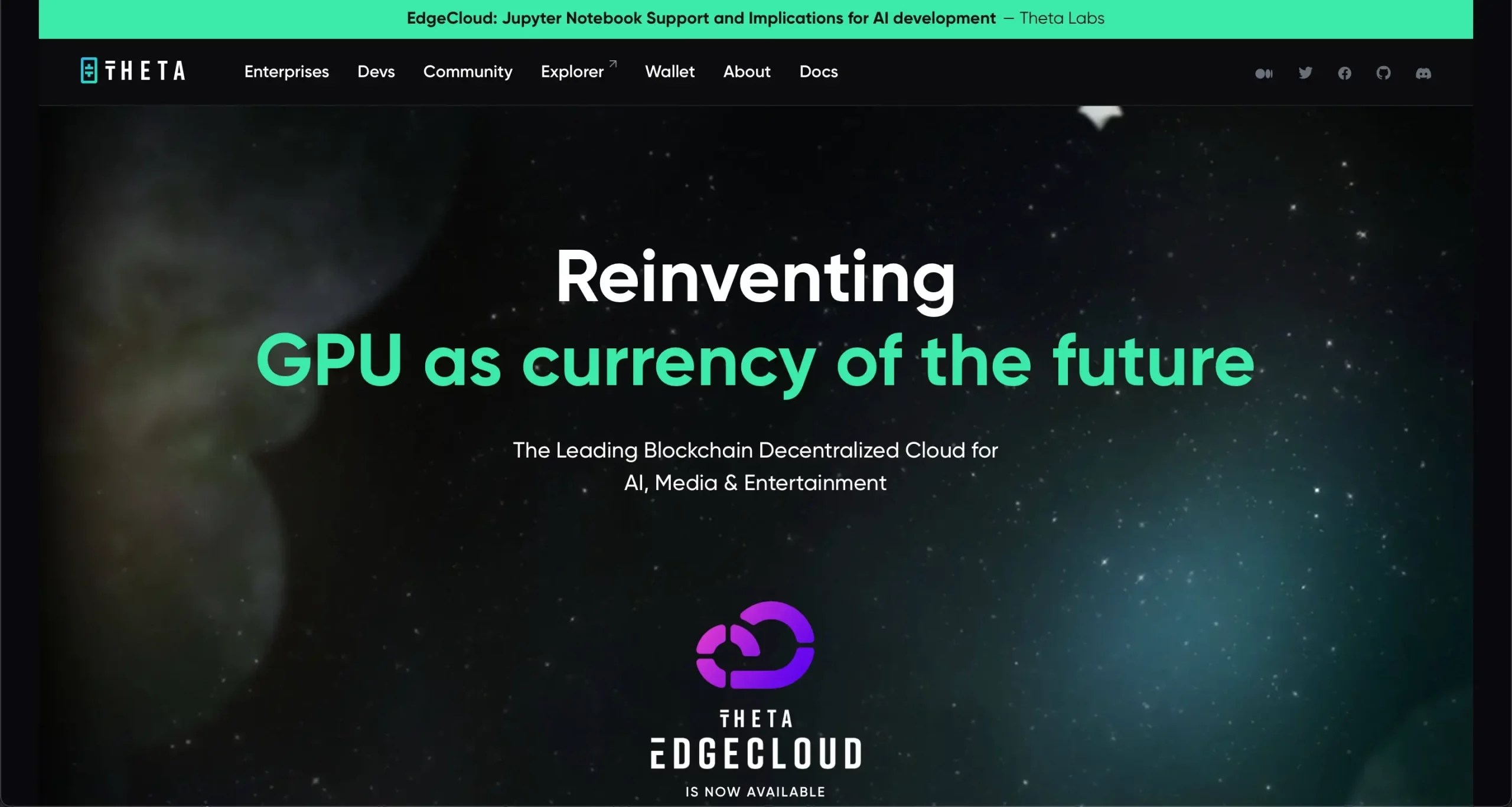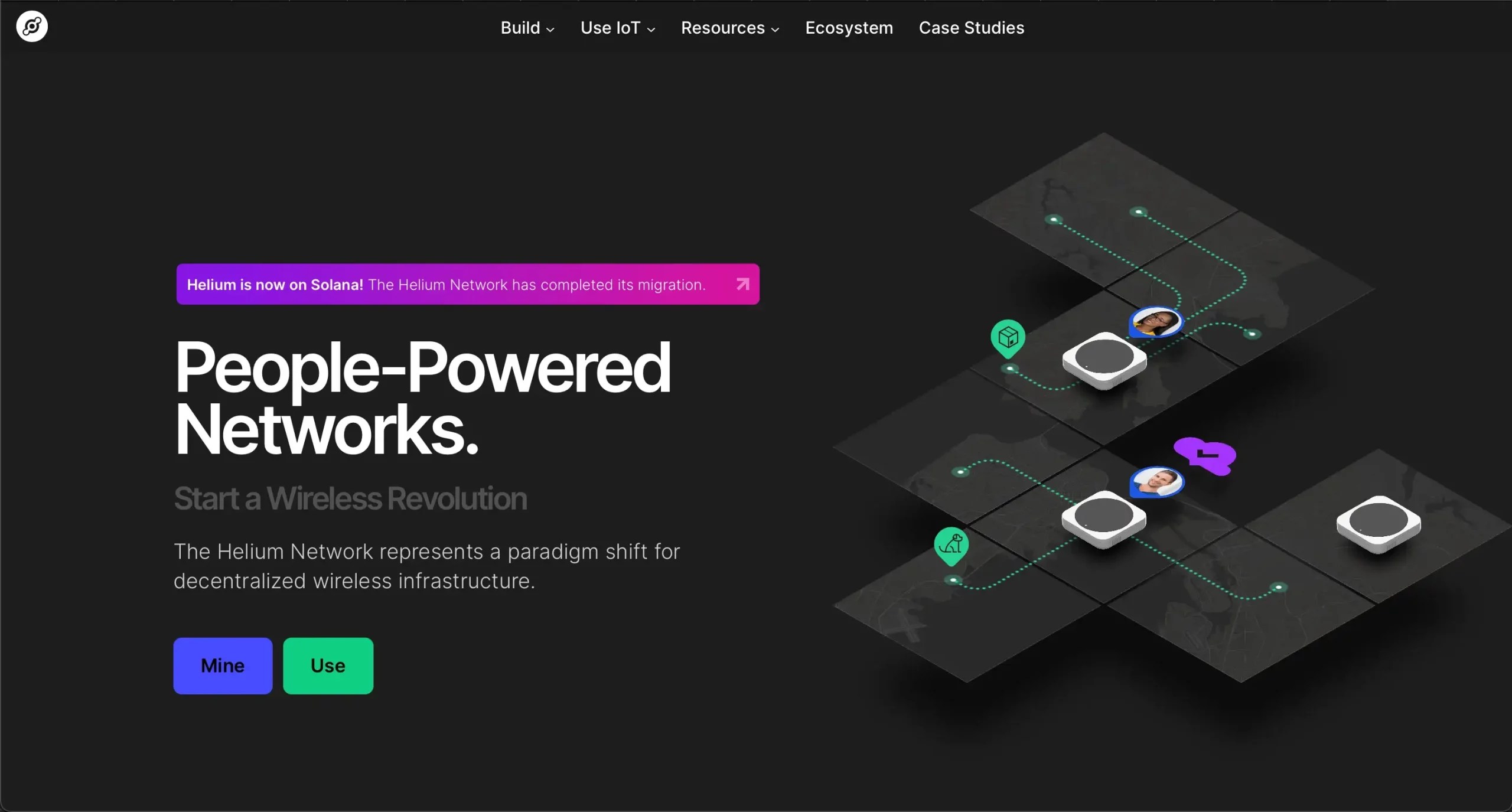The world of blockchain technology and cryptocurrency is continuously evolving, and a new chapter is unfolding with the rise of Decentralized Physical Infrastructure Networks, also known as DePIN, within the crypto market.
This concept plays a crucial role in the shift from virtual transactions to real-world applications. As we stand on the verge of this transformative era for blockchain networks, it’s essential to explore the basics of DePIN and understand its potential for revolutionizing blockchain infrastructure.
This article discusses DePIN, its integration with existing technologies, and its opportunities and challenges. Let’s explore this intriguing journey through DePIN crypto, where combining digital and physical domains opens up a groundbreaking paradigm for decentralized networks.
What is DePIN?
In short, DePINs are peer-to-peer systems in which network participants contribute to physical infrastructure resources through data integrity and storage facilities, decentralized finance, telecommunications, wireless connectivity, and other means to earn rewards based on the networks’ protocols.
Therefore, Decentralized Physical Infrastructure Networks (DePIN) aim to make infrastructures more efficient, transparent, and secure by using blockchain technology, decentralization, token rewards, and DePIN coins. For example, DePIN coins are growing as the sector acquires more network activity, investor interest, and user participation.
DePIN uses smart contracts and the Internet of Things (IoT) to allow physical devices to interact autonomously and in real-time. This ensures that transactions are securely recorded on an immutable ledger, promoting transparency and trust.
Another key technology in this ecosystem is the Internet Computer, which facilitates decentralized computation and enhances the efficiency of DePIN networks.
Token rewards encourage participation, motivating users to contribute storage space and other resources to the network. This approach extends across various sectors, including data collection, storage, and wireless networks.
Service providers offer their resources, which are recorded on a blockchain and rewarded with cryptocurrencies.
DePIN Main Principles
- Blockchain as an Administrative Tool: It allows open participation in providing services.
- Blockchain as a Payment System: It facilitates service transactions and cryptocurrency rewards.
- Blockchain as a Record-Keeping Mechanism: It ensures all actions are transparently logged.
This decentralized approach makes services more accessible and reliable and opens up new opportunities for infrastructural development.
Categories of DePINs: PRNs and DRNs
DePINs are divided into two main categories based on how they integrate blockchain technology with physical and digital resources:
1. Physical Resource Networks (PRNs): PRNs rely on location-specific hardware to provide services like network connectivity, energy supply, and geospatial data collection. For example, wind turbines in a wind energy network generate power distributed locally. PRNs offer localized services directly linked to where their hardware is placed.
2. Digital Resource Networks (DRNs): These operate independently of location, providing global access to digital resources like cloud storage, computing power, and bandwidth. DRNs enable the seamless exchange of digital assets worldwide, making them highly flexible and not tied to any specific place.
How Does DePIN Work?
DePINs use blockchain technology to spread control and management across a network instead of putting it all in one place. This makes systems like energy grids, supply chains, and data storage more efficient and fair.
Decentralized physical networks aim to use blockchain, IoT, and renewable energy to build efficient and community-driven infrastructure. As DePINs evolve, they offer exciting possibilities. They can improve energy distribution, telecommunication, and transportation, making essential services like healthcare and education more accessible.
Some systems even reward participants with cryptocurrency or digital tokens for the energy they share, encouraging people to keep the system running and growing.
Here’s how DePINs work, broken down into four key parts:
- Blockchain: The backbone of DePINs, using smart contracts to enforce rules, charge fees, and give rewards.
- Physical Network: This includes all the hardware, such as sensors, routers, and solar panels, that move data and resources around the network.
- Token Rewards: Participants earn crypto tokens to provide services and engage with the network.
- Off-chain Networks: Manage data transactions outside the blockchain, where users buy resources like computing power and data storage from other providers.
DePINs use native tokens to encourage people to offer unused resources, such as storage space and bandwidth. Users pay with these tokens to access services, making the network self-sustaining. As more people participate, these tokens’ value increases, attracting more contributors.
This creates a positive cycle known as the flywheel effect, where the network grows and becomes more efficient over time.
Two examples of DePIN projects are Render Network, which provides real-time 3D rendering using decentralized GPUs, and Helium. This wireless network connects devices worldwide without needing satellite or cellular plans.
The DePIN Flywheel
The DePIN Flywheel is a self-sustaining cycle that drives growth in decentralized networks. It starts with increased usage: as more people use the DePIN network, the demand for services like storage and computing power grows. This higher demand boosts the value of DePIN tokens, primarily through mechanisms like token burns or buybacks.
As token values rise, it becomes more attractive for people to contribute resources, such as storage space or data center capacity, to the network. This influx of resources expands the network’s capacity, allowing it to support more users and offer a more comprehensive range of services.
With this growth, the network becomes more appealing to investors, who bring in additional funding and support. This cycle of growth, increased value, and expanded participation helps DePIN networks continuously develop and improve, creating a robust and resilient physical infrastructure network.
Top 10 DePIN Benefits
When it comes to the benefits of DePIN, these decentralized networks offer several advantages over traditional infrastructure solutions:
1. Accessibility: DePINs Are Permissionless
DePINs operate on public blockchains, allowing anyone to join without restrictions. This openness enables broader access to technology, especially in areas lacking traditional infrastructure.
2. Resource Efficiency: DePINs Use Minimal Resources
DePINs better optimize the underutilized community resources, such as spare storage and computing power, leading to a more efficient and sustainable use of resources.
3. Affordability: DePINs Are Crowdsourced
DePINs reduce costs and speed up development by leveraging crowdsourced funding and effort. Users can pay only for the services they use, often at a lower price than traditional infrastructure.
4. Rapid Scalability: DePINs Are Borderless
The decentralized structure of DePINs allows for rapid expansion across different regions without bureaucratic delays. This facilitates quick growth and adaptation to new demands, where DePIN crypto projects can scale infinitely.
5. Self-Sustainability: DePINs Are Their Ecosystems
DePINs generate enough income through token incentives and efficient resource management to maintain and expand their infrastructure. This makes them resilient and independent from external funding.
6. Community Control: Decentralization
DePINs distribute control among a collective of individuals rather than centralized entities. This democratizes decision-making and enhances transparency within the network.
7. Fair Pricing
DePINs’ pricing models are based on the actual costs incurred by individual providers, leading to more transparent and fair pricing compared to traditional services.
8. Cost-Efficient Operations
DePINs minimize operational expenses while maximizing service delivery. Providers can offer resources to multiple networks, and users benefit from fair service pricing.
9. Incentivization
DePINs use tokenomics to encourage participation and positive behavior. Providers earn income from their contributions, making it profitable to share resources that would otherwise be idle.
10. Protocol and Consensus
By using established blockchain protocols, DePINs benefit from built-in governance, consensus, and security mechanisms, which ensure a reliable and trustless network.
What Are the DePIN Challenges?
As with any emerging tech concept and application, there are also downsides, so let’s get to them.
1. DePIN’s Adoption
DePIN is a relatively new concept; thus, only a tiny percentage of blockchain network participants and owners use it within a system.
Indeed, its level of adoption could improve in the future, yet here’s the challenge: how to design a system that attracts new users and providers to power the flywheel, drive growth, and increase revenue?
2. The Challenges of Tech Aspects
Even though the crypto market has existed for quite some time, some users and enthusiasts still confuse terms and don’t understand the blockchain technology behind it very well. Thus, DePIN could be daunting to understand.
Therefore, the solution to overcome this challenge is for such DePIN crypto projects to educate the market.
3. Revenue
For many DePIN projects, attracting providers offering real-world services is challenging as they must ensure that remitted rewards are profitable.
The Best Features for Scaling DePIN Apps
For DePIN applications to scale effectively, specific blockchain architecture considerations are crucial:
- Scalability: Handling high transaction volumes and data throughput.
- Transaction Economics: Maintaining low transaction fees for sustainability.
- Interoperability: Effective communication with other networks and legacy systems.
- Security: Strong mechanisms to protect data and ensure network integrity.
- Usability: User-friendly interfaces to encourage widespread adoption.
The Future of Decentralized Physical Infrastructure Networks
DePIN promises to strengthen and expand hardware networks. By using incentives and rewards, these networks can grow without needing big, centralized companies. However, some challenges remain, like determining regulations and ensuring that different systems can work together.
Collaboration and Innovation
To achieve this vision, we need cooperation from various stakeholders, support from regulators, and continuous technological innovation. Working together is critical to solving current problems and fully realizing the potential of decentralized physical networks.
With the proper support, DePINs can transform the world, giving individuals and communities the power to create fair and sustainable infrastructure.
Opportunities for Entrepreneurs
For entrepreneurs, DePIN offers a new way to access previously difficult markets. For instance, starting a new telecom service requires a lot of money for infrastructure and maintenance.
With DePIN, entrepreneurs can build their network by allowing everyone to participate and creating digital infrastructure. Providers set up and maintain their hardware, creating a community-run service that is flexible and community-driven.
Expanding Horizons
DePINs are already progressing in various areas, such as data storage, computation, VPNs, network access, weather data, and energy distribution. They are also exploring new fields like mobility and digital twins.
These community-driven networks are set to disrupt large markets, offering new opportunities and innovations.
Technological Integration
New technologies like 5G, edge computing, and advanced AI will improve DePIN projects. These technologies will help address issues like scalability and security, making decentralized networks more reliable and efficient.
Regulatory and Industry Collaboration
Regulations and industry partnerships will play a big role in the global adoption and impact of DePIN. DePIN projects will likely overcome current challenges as technology advances and open new opportunities for decentralized infrastructure.
Promising Future
Despite the challenges, the future of DePIN looks bright. As the demand for AI and computing grows, decentralized hardware becomes more valuable. Companies like Akash Network and Ritual are leading the way, using decentralized networks for various purposes beyond just crypto.
This presents new opportunities and risks for investors, highlighting the need for careful planning and investment in DePIN projects.
The 7 Best DePIN Projects
Now, let’s dive into some of the most important examples of DePIN projects that are making waves in the decentralized infrastructure and crypto space. Also, from a user’s side, you can simply request the services offered by a DePIN project.
1. Filecoin (FIL) – Best For Democratizing the Cloud Storage Industry

Filecoin, developed by Protocol Labs, is the largest DePIN project by market capitalization. It provides decentralized cloud storage solutions, allowing users to buy and sell digital storage spaces securely and efficiently.
Anyone in the network can become a storage provider and earn FIL tokens by renting out their storage space. The network uses Proof of Spacetime (PoSt) and Proof of Replication (PoRep) to ensure the security of stored files.
2. Render Network (RNDR) – Best Decentralized Marketplace for GPU Power

Render Network is a distributed rendering platform that harnesses GPU power from its ecosystem to process high-end 3D content creation.
Established in 2017, Render Network allows GPU providers to earn Render tokens (RNDR) in return for their computing power. Its cost efficiency and low power consumption make it a vital resource for digital products in the metaverse.
3. Theta Network (THETA) – Best for Decentralized Peer-to-Peer Video Delivery

Theta Network is a blockchain-based video delivery platform that uses spare computing resources and bandwidth to create an efficient video streaming ecosystem.
Within the Theta Network Ecosystem, users are rewarded with THETA tokens for consuming content and sharing unused network resources. THETA also serves as the network’s governance and staking token.
4. Helium (HNT) – Best IoT Device Connectivity

Helium has created a decentralized network for Internet of Things (IoT) devices, using hotspots to provide wireless network coverage everywhere. Users are rewarded with HNT tokens for operating hotspots, which helps expand and maintain the network.
Helium is also developing 5G capabilities to provide network coverage, enhance performance, and earn tokens.
5. Ocean Protocol (OCEAN) – Best for Democratizing and Monetizing Data

Ocean Protocol connects data consumers with data providers through a decentralized marketplace, enabling large-scale data sharing while preserving privacy. The OCEAN token facilitates transactions within the market, allowing data providers to monetize their data.
6. Akash Network (AKT) – Best to Buy and Sell Computing Resources

Akash Network is an open-source, decentralized cloud computing platform that provides alternatives to services like Google and Amazon Web Services (AWS).
It features Akash ML, which is designed to offer decentralized access to machine learning GPUs. The AKT token is used for network governance, security, incentives, and value exchange.
7. Arweave (AR) – Best for Permanent Storage

Arweave offers permanent, immutable data storage through a decentralized web called the ‘permaweb.’ It uses a unique consensus mechanism, Proof of Access, to ensure data security and permanence. The AR token is used to pay for data storage, with a one-time fee covering indefinite storage costs.
DePIN FAQ
What Coins are DePIN?
Coins associated with DePIN (Decentralized Physical Infrastructure Networks) include those used by various DePIN projects to incentivize participation and facilitate network transactions. Examples include:
- Filecoin (FIL): Used in the Filecoin network for decentralized cloud storage.
- Render Token (RNDR): Used in the Render Network for decentralized GPU rendering.
- Theta (THETA): Used in the Theta Network for decentralized video streaming.
- Helium (HNT): Helium is used in the Helium network for decentralized IoT connectivity.
- Ocean Protocol (OCEAN): Used in the Ocean Protocol for decentralized data sharing.
- Akash Token (AKT): Used in the Akash Network for decentralized cloud computing.
- Arweave (AR): Used in Arweave for decentralized and permanent data storage.
How big is the DePIN market?
The DePIN market is rapidly growing as more projects and technologies integrate into the decentralized infrastructure space. The exact market size is difficult to pinpoint due to its evolving nature and the variety of sectors it spans, such as storage, computing, and networking.
However, some leading projects, like Filecoin, Helium, and Theta, have market capitalizations in the hundreds of millions to billions of dollars, indicating significant and increasing market interest in and investment in DePIN solutions.
What is DePIN Solana?
“DePIN Solana” refers to DePIN projects built on or utilizing the Solana blockchain. Solana is known for its high throughput and low transaction costs, making it an attractive platform for decentralized applications and networks.
These projects leverage Solana’s capabilities to provide efficient, scalable, decentralized physical infrastructure services.
What does DePIN mean?
DePIN stands for Decentralized Physical Infrastructure Network. It refers to networks that utilize blockchain technology, decentralization, and token rewards to enhance the efficiency, transparency, and security of physical infrastructure systems such as energy grids, water supply, transportation networks, and more.
What does DePIN in crypto stand for?
In the context of cryptocurrency, DePIN stands for Decentralized Physical Infrastructure Network.
Final Thoughts on DePIN
The rise of DePIN marks a significant evolution in the crypto industry. It offers innovative solutions that bridge the digital and physical worlds. DePINs can create more efficient, transparent, and secure systems by leveraging decentralized physical infrastructure networks and real-world infrastructure.
As these networks grow and integrate technologies like 5G and artificial intelligence, they hold the potential to transform various sectors and provide new opportunities for entrepreneurs and investors alike.
The future of DePIN looks promising, and its continued development will likely play a key role in advancing blockchain infrastructure and the broader crypto-assets landscape.
* The information in this article and the links provided are for general information purposes only
and should not constitute any financial or investment advice. We advise you to do your own research
or consult a professional before making financial decisions. Please acknowledge that we are not
responsible for any loss caused by any information present on this website.
Source: https://coindoo.com/depin-crypto/